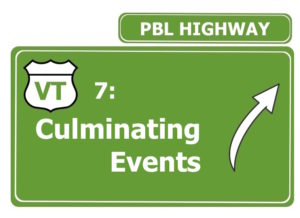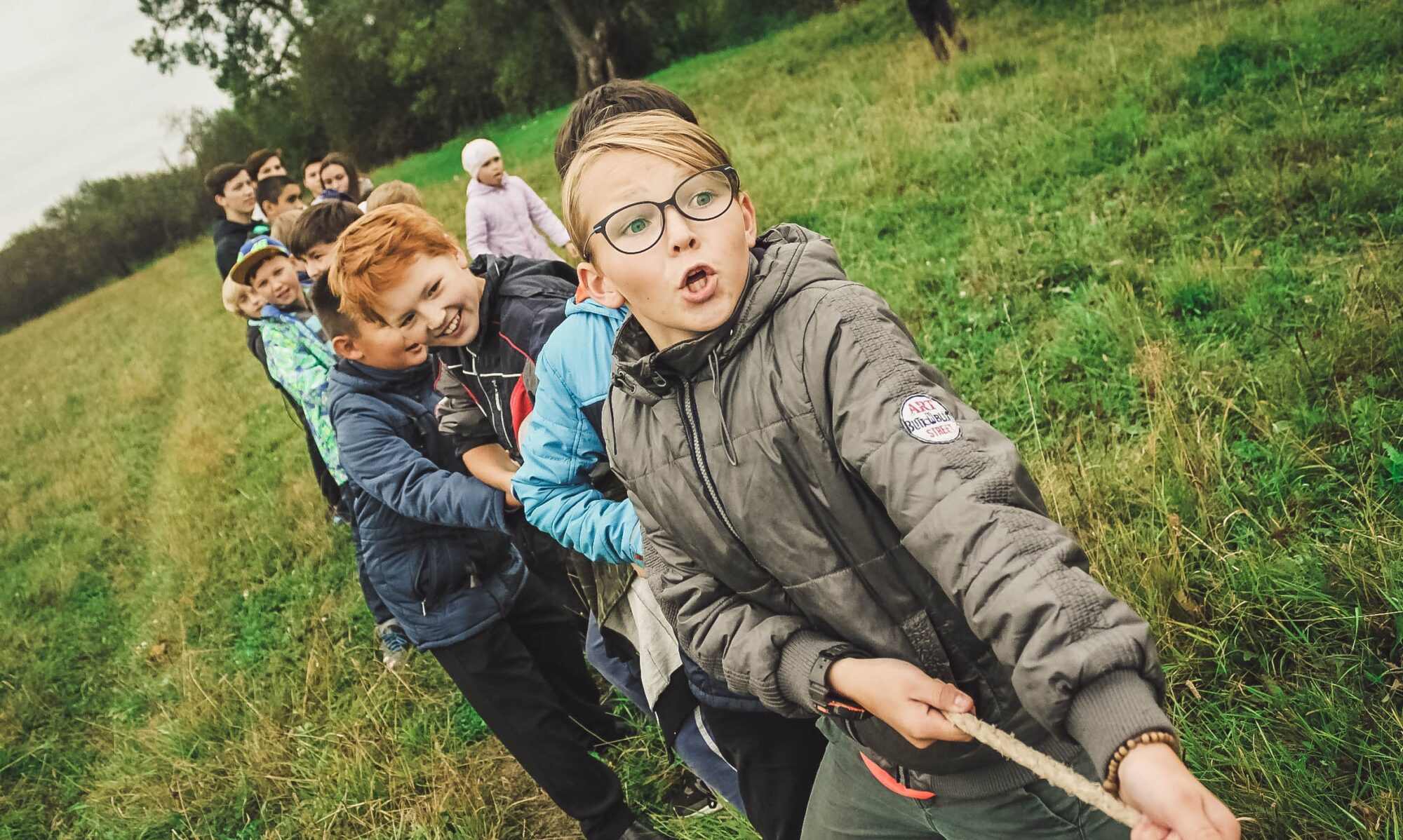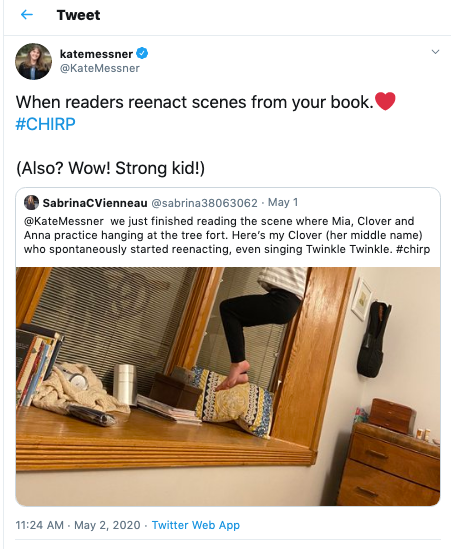It is spring. I know, snow has fallen and it has been cold lately, but it’s officially May. And while school might not look like every other bustling year with our end of the year celebrations, showcases, exhibitions, and events, we can still find ways to celebrate and share student learning. You might find yourself having to PIVOT your passion projects, project-based or service learning units celebrations online.
In this moment, we can still find connection, audience and purpose. It’s just (like everything else right now) going to take a bit of planning and pivoting.
So, rewind!
What are culminating events?
 They’re the lovely finish line of a project-based learning unit. They celebrate the projects and the learning in an authentic, community based forum. And they’ve been a key motivating factor for the project. Generally, they’re in-person events, like school exhibitions, community nights, or guided tours.
They’re the lovely finish line of a project-based learning unit. They celebrate the projects and the learning in an authentic, community based forum. And they’ve been a key motivating factor for the project. Generally, they’re in-person events, like school exhibitions, community nights, or guided tours.
I think you see where we’re going with this.
*sigh*
But all is not lost: culminating events can still happen in meaningful ways online.
The essential elements of culminating events are exactly the same online
A culminating event should be:
- an authentic way to share projects to a wider community
- the audience is one that is important to the students– they are stake-holders on the issue
- students see and feel how their work is connected to a wider community
- students present their work publicly and feel the value in this
Make it work!
Learning fairs & exhibitions
In learning fairs and exhibitions, students present to parents, the school community, and other interested groups. These usually take place in gymnasiums, courtyards, and classroom spaces. Now? We need to consider how to bring folks together online.
There could be various formats for this, both asynchronous and synchronous. A quick review!
- Synchronous is when students are learning at the same time, in real time. This allows for instant personal communication and connection. Examples of this include video conferencing, live chats, and live streamed videos.
- Asynchronous is when students are learning at their own pace, at different times. Communication is pre-recorded in some way. This is sometimes more convenient and flexible for learners. This includes emails, screencasts, messages on Google Classrooom, Flipgrids, and blog posts or comments.
Next, consider what might work best for your students and families. And right now? Many folks are understanding how important education is (um, yeah!) and are able to support students with feedback and celebration.
Synchronous options:
- A live Zoom/Google Meets presentation. This could be a time when students do a short video presentation live. They could share their screens to show their digital work. Survey caregivers to see what time might work best for them, and provide different options. If students were unable to be present live, or if a bandwidth / tech issue prevents successful synchronous meeting, the student could record a screencast presenting the work, then submit their videos to their teachers before hand, who could show it.
Asynchronous options:
- A shared padlet. Students could publish their work to a padlet. What is a padlet, you say? It’s like a virtual bulleting board, where you can pin up work and links. You can set them so that anyone with the link could comment; then grandparents, neighbors, other invested community members (and even the general public if you desire!) could comment.
- A shared Flipgrid. Students could post their presentations to a Flipgrid for your class. A new topic, called our community celebration/demonstration of learning, could be set up and students could post their presentations. Again, students and families could post comments and reactions. They could even record their own videos responding and giving praise.
- A YouTube video. Decide what level of audience you want: an unlisted video, or one linked to your school’s account. I would leave comments off for this, but you could encourage folks to give feedback in another format.
- A published website of a gallery of images. This could be shared with various audiences via email or social media. Other ideas include online maps, blog posts, or online magazines and websites.
- E-book creation. Book Creator is a great tool for this! Students can work on part of a book and demonstrate their learning that way, and the teacher can publish the e-book for any audience. For example, see this recently released e-book from the researchers at Ottauquechee School.
- Seesaw Journal or Blog entries. If your students are regularly sharing their learning on their Seesaw digital portfolios, or in a public Seesaw blog, this is a perfect venue for them to share their presentations with teachers and families.
These provide a great way to assess students use of the transferable skills of communication as well!
Student-to-student presentations
Students can present their work to younger students in this moment too. Sometimes the most valuable audience is peers. Especially younger ones that motivated older students to engage, be role models, be friendly, and connect. Can two classes connect for a presentation of learning via videoconferencing? Or can your students sent a video or photo of a project to younger students for feedback? This is a great option for this moment of prolonged remote learning.
Digital showcases
With so many digital sharing tools, students can create something of value in their PBL projects to share with the wider world. The culminating event can include the act of sharing that creation.
These can include educational YouTube videos, online maps, blog posts, or online magazines and websites. Take a look at this YouTube video from the historians and newscasters at Proctor Elementary School, in Proctor VT.
Targeted shares
Did your students do projects based on a favorite book? Maybe they could share their work directly with the author! So, one collective padlet or gallery of projects could be shared directly with the author on Twitter, and imagine the excitement of a response, if not by the author, then by lots of fellow readers. This could work for scientists, writers, performers, politicians, CEOs, and other leaders of their fields!
Or reenactments of a scene from your favorite books could get noticed by the author…
Reflection and practice makes progress
When finishing a project, take a few moments to help students get ready to present by reflecting on their experience. Ask questions like:
- What did you learn?
- How did you work through challenges
- Describe new skills did you gain?
- How do you feel about your work?
In addition, students will still need to practice a lot to get ready to present, no matter what format! Students have different levels of comfort with presenting and will need practice time, scaffolding, and some feedback about how to improve. Family members, siblings, or even stuffed animals can make good practice partners.
Lastly, don’t forget to have students reflect at the end of the culminating event, too. This is a great time to capture student thinking after sharing their work to an audience. Here are some ways to facilitate these reflections.
Share your Learning has fabulous resources for ways to share your learning remotely, with step by step guides!




This is such an interesting way we’re having to encounter technology; I’m excited to see the new ideas emerging from all these educators I’m seeing who are passionate about both celebrating their students’ learning *and* also meeting their students where they are, in These Uncertain Times.
One question I have for you, though is: do you have any guidance on what an online culminating event could look like if a student didn’t complete the PBL unit or project, or is experiencing trauma or anxiety that makes the event more of a challenge, perhaps an insurmountable challenge? In other words, how much can educators simply celebrate students for just showing up?
This is such a good point. Since PBL is really about the process, a student showing up, participating is certainly enough. Even a reflection on starting the project, or a connection to someone else’s project, all are great to encourage in this moment. Thank you for this idea and acknowledgment that this is where some of our students are right now.